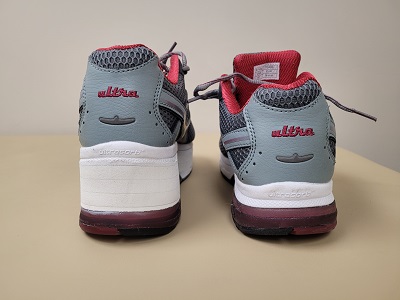
Orthotics for a leg length discrepancy
A leg length discrepancy can be caused by a few different factors, but orthotics can benefit in many of those cases. First, it’s important to determine what kind of leg length discrepancy it is. Then, we take a look at what can help with the discrepancy.
Structural vs functional leg length discrepancy
There are two types of leg length discrepancies: structural and functional. In many cases, both a structural and functional difference can be present.
Structural leg length discrepancy
A structural leg length discrepancy is when the bones on one leg are physically shorter than the other side. This can be caused by factors such as surgery, a leg fracture as a child (when still growing) or because of genetics.
A structural leg length discrepancy will not change unless surgery is performed. This is because the difference has to do with the actual structure of the bones. This is corrected by using a lift to raise the short leg to the level of the longer leg.
If a structural difference has been present for many years, the body starts to compensate in different ways. One way the body will compensate is by changing the feet. This is done by walking on the outside of one foot to lengthen the short leg, and the inside of the other foot to shorten the long leg. In this case, there is a functional difference at the feet causing the structural difference to appear smaller than it is.
Functional leg length discrepancy
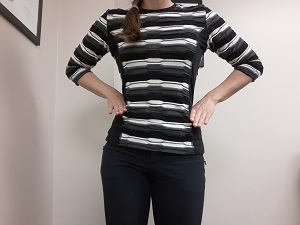 A functional leg length discrepancy is when there are factors causing the legs to appear different lengths. This can be caused from factors such as a muscle imbalance or the way the feet are moving.
A functional leg length discrepancy is when there are factors causing the legs to appear different lengths. This can be caused from factors such as a muscle imbalance or the way the feet are moving.
Health professionals such as a chiropractor, physiotherapist or massage therapist can take a look at muscle imbalances causing a leg length discrepancy.
As for the feet, differences from right to left can cause imbalances higher up. For example, if one foot rolls out and the other rolls in, or if the right foot rolls in more than the left, it can cause a functional leg length discrepancy.
In many cases, both a foot orthotic and treatment for muscle imbalances are recommended. There are usually multiple factors in the body interacting to lead to the functional leg length discrepancy. If you have tried one method for an appropriate amount of time (determined by your health professional) without full pain relief, it may be worth it to begin another method as well.
How orthotics help with a leg length discrepancy
Orthotics can be used to treat both a structural and a functional leg length discrepancy. They can also be effective when both a functional and structural difference is present.
How orthotics help with a structural leg length discrepancy
A structural leg length discrepancy is corrected with a lift. If the difference is small enough to fit inside of a shoe, it can be added to a foot orthotic. A foot orthotic can be beneficial when correcting a structural leg length discrepancy. It helps to deal with any functional differences and prevent the feet from changing in ways that can cause other issues.
If the lift is too large inside of a shoe, it is added to the outside of the shoe instead. There are other pros and cons associated to this. See “when shoes need to be modified” below for more information.
If a structural leg length discrepancy has been present for many years without correction, the full structural difference is not typically tolerated. This is because there may be functional differences causing the structural difference to appear shorter. If this functional difference is present with the structural difference, the lift may need to change during treatment. As the functional difference changes, the structural difference may become more necessary to correct.
How orthotics help with a functional leg length discrepancy
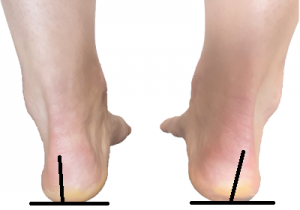 When there is an imbalance with the feet rolling in or out, and orthotic device can balance this out. Once the feet are balanced, it transfers up to the hips.
When there is an imbalance with the feet rolling in or out, and orthotic device can balance this out. Once the feet are balanced, it transfers up to the hips.
In some cases, a functional leg length discrepancy may not be caused by the feet, but orthotics can benefit. The way the feet are moving can slow the treatment process of dealing with muscle imbalances. For example, if the muscles in your lower back are very tight on one side, feet that roll in or out can cause these muscles to work harder than they need to. Supporting the feet with orthotics can help release strain to the back muscles, allowing the treatments to work more efficiently.
When shoes need to be modified
For a structural leg length discrepancy that cannot fit into a shoe, the lift can be added to the outside of the shoe. The shoe is split at the sole, the lift is added, and the sole is placed back on the shoe.
A benefit to adding this lift to the outside of the shoe is that the entire foot is lifted up instead of just the heel. When adding the lift inside the shoe, it’s usually just a heel lift because a full lift would be too thick inside the front of the shoe. With the lift on the outside, it keeps the hips at the same level throughout the entire walking stride.
One downside to adding the lift to the outside of the shoe, is that it is only on one shoe. It cannot be transferred to another shoe. If you want the lift on multiple shoes, each one needs to be modified.
If you would like your legs checked for a leg length discrepancy, or your shoe needs to be modified, contact us or book an appointment!

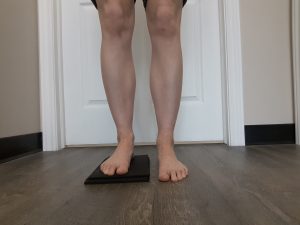
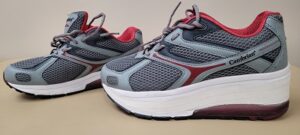
You must be logged in to post a comment.